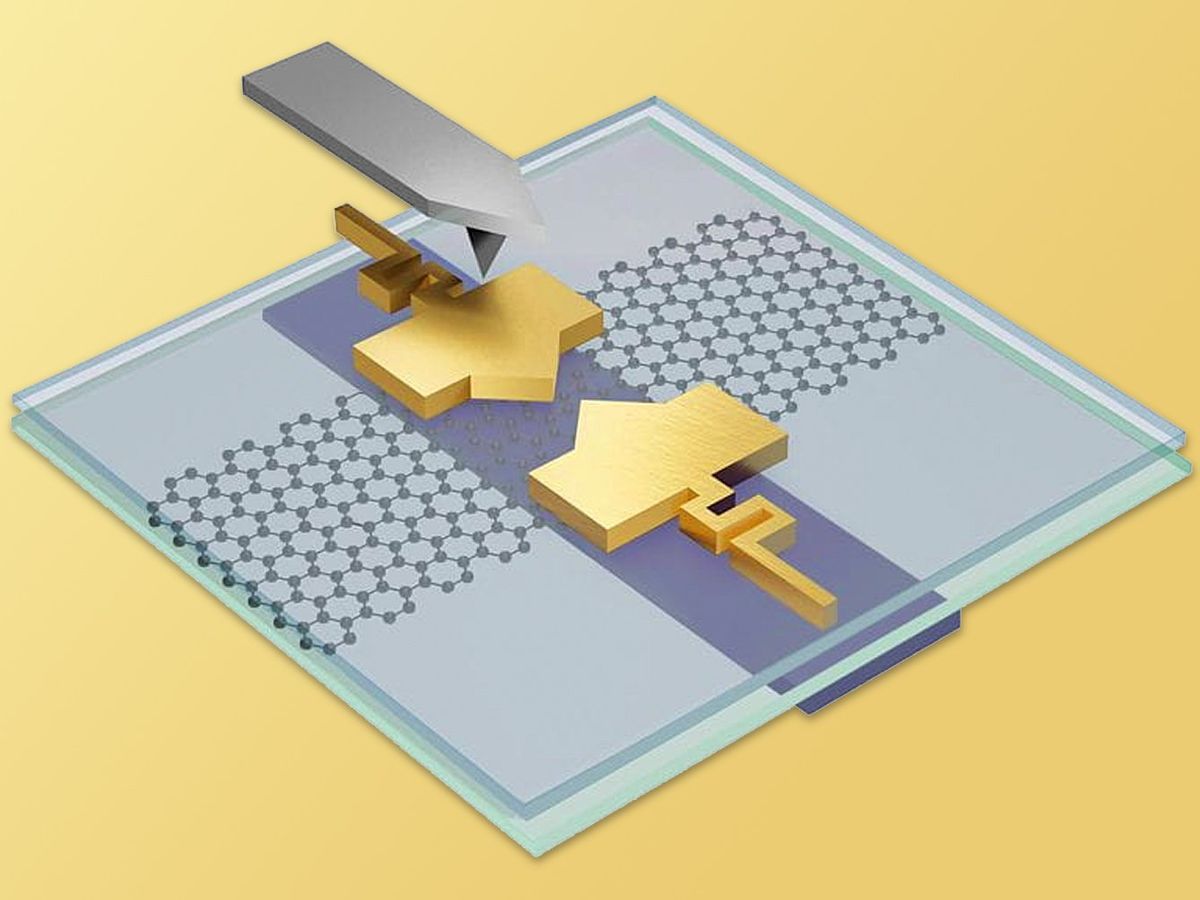The world’s smallest conventional electronics—devices only nanometers in scale—are typically like any other solid object large or small. When they’re manufactured, they’re molded into a shape, and the item retains that same shape over the course of its functional lifetime. Yet what if nanoscale electronic components and devices could shape-shift? What if they could assume multiple configurations depending on the electric and magnetic signals going into them? Scientists have now provided initial answers to these questions by creating the first nanoscale electronic devices that can physically transform their shape, a feat that may one day lead to more robust microscopic electromechanical gadgets, the researchers find.
Nanoscale electronics are usually static in nature, with their architectures fixed in one form once they are built. “All the materials in these devices are glued together,” says study senior author Javier Sanchez-Yamagishi, a physicist at the University of California at Irvine.
Microelectromechanical systems (MEMS) do possess moving parts. However, these require complex, delicate components that are suspended in space, Sanchez-Yamagishi says.
In the new study, the researchers developed the first transformable nanoscale electronic devices. Their parts can slide on surfaces a bit like refrigerator-door magnets, allowing a single part to modify the devices’ structures after they are produced.
“What I find most surprising is our ability to move large parts of our microscale device repeatedly and quickly over large distances without ripping the whole thing apart, despite the fact that the moving parts are in direct atomic contact,” Sanchez-Yamagishi says.
The scientists did not initially set out to make this discovery. They had thought everything they were investigating would remain static, but when they accidentally bumped into the device, they saw wires move, Sanchez-Yamagishi recalls.
In the new study, the researchers experimented on so-called van der Waals materials such as graphite and hexagonal boron nitride. These materials are made of stacked films of smooth, atomically thin layers held together by weak electric forces known as van der Waals interactions, the same forces that often make adhesive tapes sticky.
The delicate nature of van der Waals interactions means that, typically, something gets stuck with only weak adherence to the surfaces of van der Waals materials. The scientists found that nanoscale gold wires could slide with very low friction on top of hexagonal boron nitride. This slippery interface let the researchers produce a number of mechanically reconfigurable gadgets, including scanning probe devices that are potentially useful for microscopy, and extremely sensitive detectors of electric charge, potentially useful as readout devices in quantum computers.
“We are able to make mechanically movable devices because the friction between the different materials is low enough to enable sliding without ripping everything apart,” Sanchez-Yamagishi says.
Potential applications for this research are similar to ones for conventional MEMS devices, such as “electromechanical switches, accelerometers, micropositioners, optical beam steering,” Sanchez-Yamagishi says. However, “unlike conventional MEMS, our sliding-based approach does not require suspended components, enabling in theory a more conventional fabrication process—easier to make—and making the device overall more robust.”
In the future, the scientists hope to make the interfaces more slippery to reduce the power needed to mechanically reconfigure the devices.
“Basically, this boils down to finding a universal dry lubricant that can be integrated into a conventional fabrication process,” Sanchez-Yamagishi says. “Our work offers a proof of concept that shows what is possible and motivates future research in this direction.”
The researchers detailed their findings 7 April in the journal Science Advances.
Charles Q. Choi is a science reporter who contributes regularly to IEEE Spectrum. He has written for Scientific American, The New York Times, Wired, and Science, among others.



